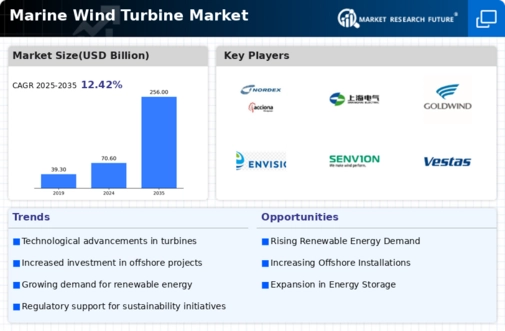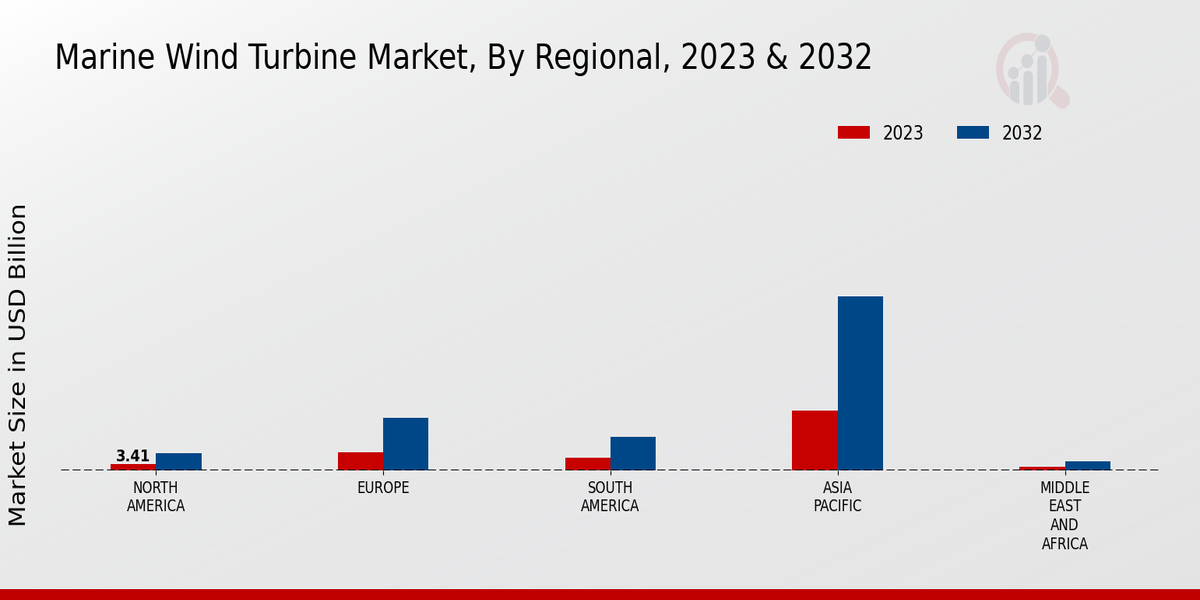Marine Wind Turbine Market Summary
The Global Marine Wind Turbine Market is projected to grow from 70.61 USD Billion in 2024 to 255.96 USD Billion by 2035, indicating robust expansion.
Key Market Trends & Highlights
Marine Wind Turbine Key Trends and Highlights
- The market is expected to experience a compound annual growth rate (CAGR) of 12.42% from 2025 to 2035.
- By 2035, the market valuation is anticipated to reach 256.0 USD Billion, reflecting a substantial increase from the base year.
- in 2024, the market is valued at 70.61 USD Billion, showcasing the current investment landscape in marine wind energy.
- Growing adoption of renewable energy technologies due to increasing environmental concerns is a major market driver.
Market Size & Forecast
| 2024 Market Size | 70.61 (USD Billion) |
| 2035 Market Size | 255.96 (USD Billion) |
| CAGR (2025-2035) | 12.42% |
Major Players
Siemens Gamesa Renewable Energy, Nordex SE, Shanghai Electric, Goldwind, Envision, Senvion, Ming Yang Smart Energy, MHI Vestas Offshore Wind, Vestas, Windey, General Electric, CSSC Haizhuang Wind Power, Doosan Heavy Industries Construction




















Leave a Comment